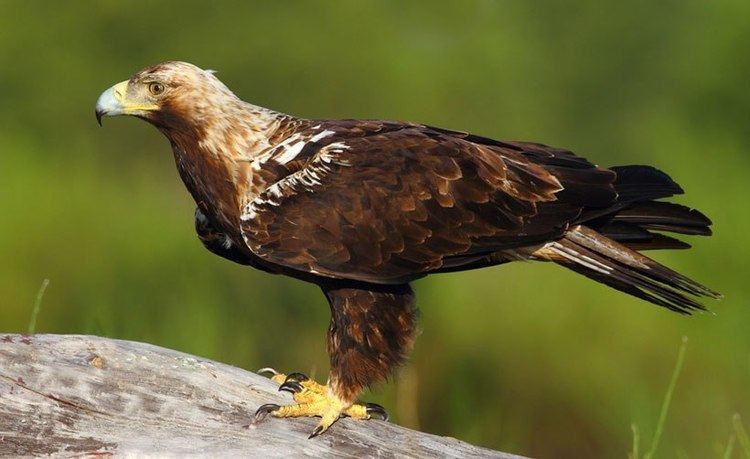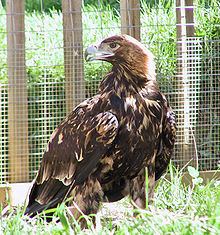Genus Aquila Higher classification Aquila | Phylum Chordata Scientific name Aquila adalberti Rank Species | |
 | ||
Similar | ||
Spanish imperial eagle aquila adalberti
The Spanish imperial eagle (Aquila adalberti), also known as the Iberian imperial eagle, Spanish eagle, or Adalbert's eagle, is a threatened species of eagle native to the Iberian Peninsula. The binomial commemorates Prince Adalbert of Bavaria.
Contents
- Spanish imperial eagle aquila adalberti
- 2014 wilber cornejo spanish imperial eagle
- Description
- Range
- Conservation
- References

Formerly, the Spanish imperial eagle was considered to be a subspecies of the eastern imperial eagle, but is now widely recognised as a separate species due to differences in morphology, ecology, and molecular characteristics.

2014 wilber cornejo spanish imperial eagle
Description

The Spanish imperial eagle averages 2.5–3.5 kilograms (5.5–7.7 lb), 78–82 centimetres (31–32 in) in length and 180–210 centimetres (71–83 in) in wingspan, and darker than its eastern cousin, and is a resident species (the eastern imperial is partially migratory). It feeds mainly on rabbits, but can prey on many other animals, such as partridges, rodents, hares, pigeons, crows, ducks, foxes or—rarely, since they are not typically present in the eagle's habitat—small dogs.
Range

The species occurs in central and south-west Spain and adjacent areas of Portugal, in the Iberian peninsula. Its stronghold is in the dehesa woodlands of central and south-west Spain, such as in Extremadura, Ciudad Real and areas in the north of Huelva and Seville's Sierra Norte.
Stable occurrence in Morocco is disputed but immature birds during the dispersion period regularly visit Morocco. Rising numbers of vagrant birds born in Spain and then electrocuted in Morocco have been noted; some areas used by the species in Morocco could be becoming sort of a 'drain' in terms of the species recovery and this is due to the fact that the country stands in a similar situation as Spain was in the early 1980s when it comes to insulation of transmission towers.
Vagrant birds have even reached Mauritania and Senegal. North of its natural range, vagrants have reached as far as The Netherlands in one rare occasion.
Conservation
The species is classified as Vulnerable by IUCN. Threats include loss of habitat, human encroachment, collisions with pylons (at some point in the early 1980s, powerlines were responsible for 80% of deaths among birds in their first year of life) and illegal poisoning. There has also been a decline in the species' main prey: rabbits have been kept at bay or even declined in some of the areas where the eagle is or could be present as a result of myxomatosis and, most recently, rabbit haemorrhagic disease.
By the 1960s it had become a critically endangered species, with only 30 pairs remaining, all located in Spain. Following conservation efforts, recovery began in the 1980s at a rate of five new breeding pairs per year up to 1994. In 2011, the species's global population had increased to 324 pairs, with 318 pairs in Spain. The species recolonised Portugal in 2003, after an absence of breeding activity for over 20 years, and has been slowly increasing since, with six breeding pairs located in 2011 and nine located in 2012. The population in Spain showed an average annual increase of c. 7% between 1990 and 2011. These positive trends are largely attributed to mitigation measures to reduce mortality associated with powerlines, supplementary feeding, reparation of nests, reintroductions and decreases in the disturbance of breeding birds, although some of the observed increases may be due to more thorough searches within its range.
